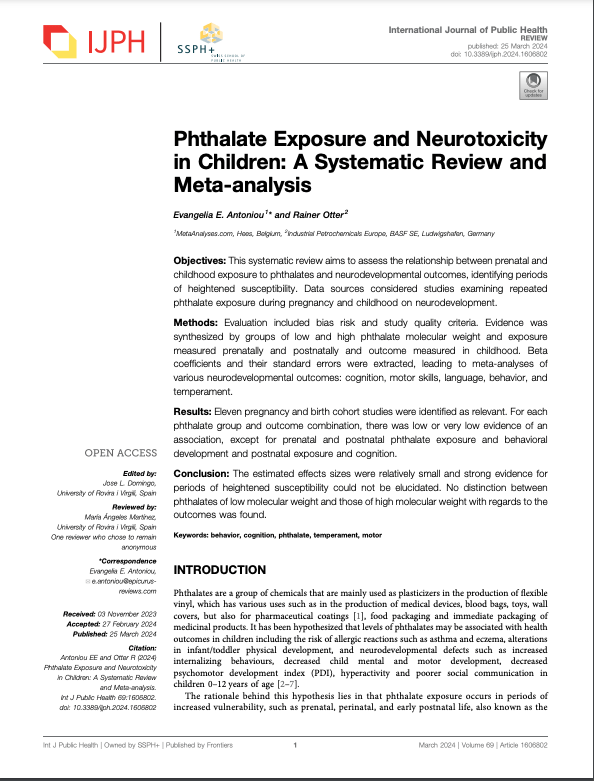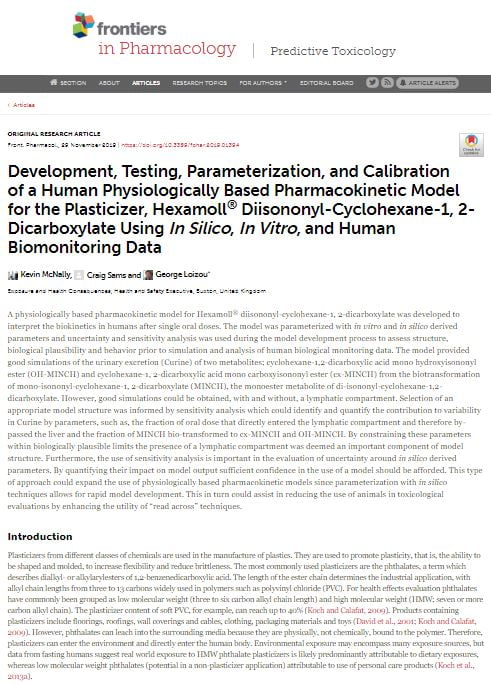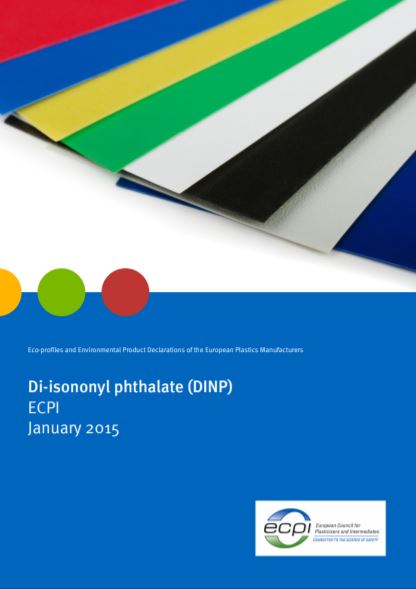Health
Plasticisers and health
Over the last years plasticisers, namely ortho-phthalates, have been under scrutiny due to their potential health risks. Some studies have linked exposure to plasticisers with health problems. However, other studies have found no such link. Minimising the impact of plasticisers on health and the environment is key for the plasticiser industry. Thus, this is why the industry has been heavily investing in scientific research to fully comprehend the potential impact of plasticisers on human health and the environment.
Plasticisers with the exception of the polymeric ones are REACH registered. Detailed data on toxicological properties are publicly available from ECHA.
Human biomonitoring for plasticisers
Human biomonitoring (HBM) is a method for quantifying the exposure of humans to chemical substances. HBM relies on measuring specific degradation products of chemicals (metabolites) in urine, back-calculation of urinary metabolites to external exposures and subsequently compares the exposure against e.g. European Food Safety Authority (EFSA) derived safe threshold limit values.
Together with industry, the German Federal Ministry for the Environment, and the German Chemical Industry Association (VCI), precise analytical techniques have been developed and validated to identify specific degradation products of plasticisers. These methods have now been adopted globally. Human biomonitoring studies undertaken by authorities showed that the urinary concentrations of specific plasticiser degradation products consistently fall within the safe threshold range. This confirmed for individual plasticisers their safe use.

Letter to the Editor Boberg et al. (2011) – Corrigendum (2016): Further significant modifications needed

Reproducibility discrepancies following reanalysis of raw data for a previously published study on diisononyl phthalate (DINP) in rats

Language Development of Young Children Is Not Linked to Phthalate Exposure

Comment on Bernard et al. Association between Urinary Metabolites and the Exposure of Intensive Care Newborns to Plasticizers of Medical Devices Used for Their Care Management. Metabolites 2021, 11, 252.

Refinement and calibration of a human PBPK model for the plasticiser, Di-(2-propylheptyl) phthalate (DPHP) using in silico, in vitro and human biomonitoring data

A rapid micro chamber method to measure SVOC emission and transport model parameters

Association between Emission Parameters and Material-phase Concentrations of Phthalate Plasticizers and their Alternatives

Phthalate Exposure and Neurotoxicity in Children: A Systematic Review and Meta-analysis

Development, testing, parameterisation, and calibration of a human PBPK model for the plasticiser, di-(2-ethylhexyl) terephthalate (DEHTP) using in silico, in vitro and human biomonitoring data

Development, Testing, Parameterisation & Calibration of a Human PBPK Model for DPHP

Systematic comparison of the male reproductive tract in fetal and adult Wistar rats exposed to DBP and DINP in utero during the masculinisation programming window

Development of a physiologically based pharmacokinetic model of diisononyl phthalate (DiNP) in pregnant rat and human

Plasticisers chapter in Ullmann’s Encyclopedia of industrial chemistry

Study of a Human Physiologically Based Pharmacokinetic Model for the Plasticiser, Hexamoll® DINCH

FACTSHEET – A Quantitative Weight of Evidence Methodology (QWoE)

A QWoE methodology for the assessment of reproductive and developmental toxicity and its application for classification and labeling of chemicals

Assessment of reproductive and developmental effects of DINP, DnHP and DCHP using quantitative weight of evidence

Outcome reporting bias in observational epidemiology studies on phthalates

